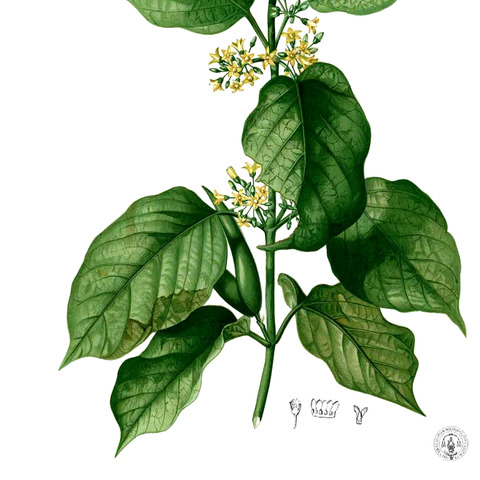Lianas to 10 m. Stems glabrous; young branchlets pale gray, lenticellate, puberulent. Petiole 2-6 cm; leaf blade membranous, ovate-oblong to ovate or broadly ovate, 4-13 × 2-9 cm, glabrous or thin puberulent along veins, base rounded to shallowly cordate, apex acuminate to caudate; lateral veins 4-6 pairs. Inflorescences eventually racemelike with sessile umbel-like cymes arranged in spiral, up to 4 cm; peduncle 1-2 cm. Pedicel 1-1.5 cm. Sepals oblong, 2-3 × 1.4 mm, shorter than corolla tube, puberulent, ciliate. Corolla yellow, 6-7 mm, minutely puberulent outside; tube cylindric, glabrous except for longitudinal bands of stiff hairs alternating with lobes; lobes oblong, 3-4 × 1.6-1.8 mm, apex rounded, glabrous except for ciliate margin. Pollinia oblong. Stigma head dome-shaped, exserted from corolla tube. Follicles lanceolate in outline, up to 16 × 3 cm, wall thick and slightly fibrous, glabrous. Seeds ca. 1.5 × 1 cm; coma ca. 4 cm. Fl. May-Jul, fr. Jun-Dec.
More
A climbing shrub or creeper. It can grow 10-25 m long. The leaves are broadly oval and 4-14 cm long by 2-9 cm wide. The leaf stalk is 2-6 cm long. The flower petals are yellow and covered with small hairs. The follicle is 8-16 cm long by 3 cm wide. It has a small beak.

